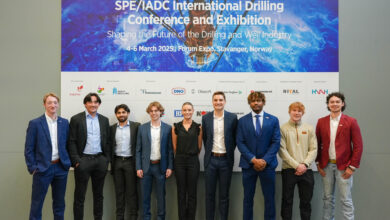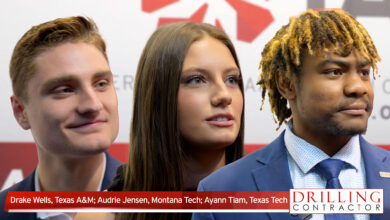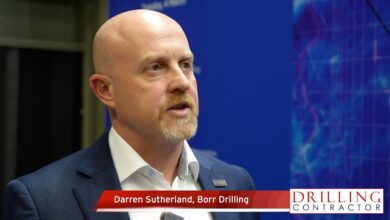Technical Session 2 – Wellbore Placement
Editor’s note: These abstracts have been edited for space and clarity. This program is current as of 15 January 2013. Additions, withdrawals and other changes to the conference program after this date may not be reflected. Click here for the most updated program.
TECHNICAL SESSION 2: WELLBORE PLACEMENT
SPE/IADC 163411
Wellbore Collision Avoidance and Interceptions – State of the Art, J.P. de Wardt, de Wardt and Co; S.V. Mullin, Gyrodata Inc; J. Thorogood, Global Drilling Consultant; J. Wright, Bearco
Results and knowledge shared from the SPE Workshop held in Inverness, September 2012 (Collision Avoidance and Well Interceptions) will be presented.
SPE/IADC 163496
Rank Wildcat Drilling Risks & Drilling Time Reduced in Ultra-Deepwater Offshore Namibia with the Application of Seismic & Formation Pressure While Drilling Technology, M. Richards, J. Kemper, A. Jervis, E. Bowles, Chariot Oil and Gas; C. Cassidy, Senergy World; M. Turner, N. Kelsall, J. Puech, Schlumberger
Rank wildcat wells in deepwater present some of the greatest challenges today. Decision making during drilling is challenging due to a lack of offset well data. 3D surface seismic data has significant uncertainty from the translation of two-way time to horizon depths, which further induces risk into the predrill pore pressure model.
This paper looks in detail at how the utilization of a high-tech logging while drilling suite in the execution of a rank wildcat enabled key drilling decisions to be made, reducing risk and time taken to drill the well.
SPE/IADC 163467
New Directional Drilling Modeling Tools Improve Drilling Performance, R. Spencer, A. Kulkarni, Baker Hughes; J. Hanson, JM Hanson Consulting
This paper describes the development and use of new directional drilling software modeling tools. A new, fully dynamic drill bit software simulator is introduced with the capability of modeling rock removal done by cutters as well as gauge pads and bit blades. Side-cutting simulations with gauge pad/rock interaction are presented and compared to side-load lab test data at atmospheric pressure. Axial drilling simulations with blade/rock interaction are presented and compared to pressurized axial drilling lab tests. Both side-cutting and axial simulations show good agreement with the lab tests.
SPE/IADC 163513
Advanced FEA-Based Modeling System Successfully Reproduces and Solves RSS Hole Spiraling Issue, M. Al Habsi, Al Hosn Gas (ADNOC); T. Stephens, Y. Owodunni, Al Hosn Gas (Oxy); R. Boualleg, Y. Shen, O. El Amin, M.R. Mokhti, P. Le, V. Radhakrishnan, Schlumberger
Hole spiraling can adversely affect drilling costs and reduce the quality of formation data acquired for geological interpretation. Quality image logs are imperative to optimize well planning, field development and reservoir characterization. In a recent production well, the operator was experiencing severe hole spiraling using RSS in the 8 ½-in hole section that severely reduced resistivity image quality. To solve the problem, an accurate 3D modeling system was applied that utilizes laboratory derived cutter-rock interaction as the basis for engineering analysis.

SPE/IADC 163472
Design, Development and Field Testing of a High Dogleg Slim-Hole Rotary Steerable System, R.F. Hawkins, S. Hough, S. Jones, J. Sugiura, J. O’Connor, Schlumberger
This paper presents the design, development and field testing of a new high dogleg RSS for 5 7/8-in.
to 6 3/4-in. hole size. The design methodology is explained in terms of requirements and specifications. The development and field testing phases of the project will be described in detail including field test results from different drilling applications worldwide.




